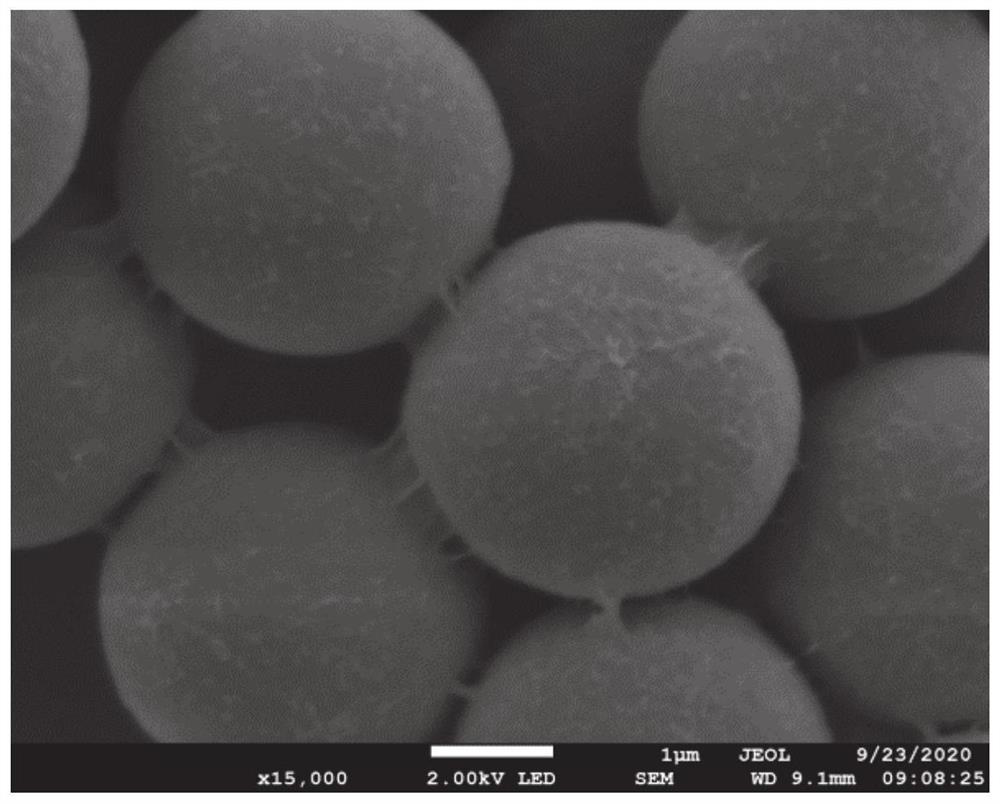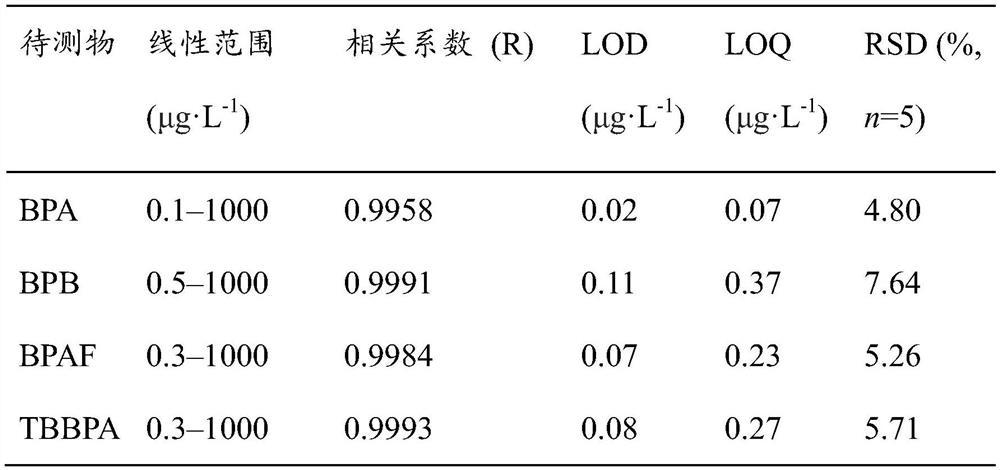Graphene oxide composite microspheres, preparation method thereof and application of graphene oxide composite microspheres in bisphenol compound detection
A technology of graphene composite and core-shell composite microspheres, which is applied in the field of environmental detection to achieve the effects of good repeatability, reduced experimental cost and high sensitivity
- Summary
- Abstract
- Description
- Claims
- Application Information
AI Technical Summary
Benefits of technology
Problems solved by technology
Method used
Image
Examples
preparation example Construction
[0027] In another specific embodiment of the present invention, the preparation method of the above-mentioned graphene oxide composite microspheres is provided, and the preparation method comprises:
[0028] S1. Polystyrene microspheres are treated with polyelectrolyte, so that the surface of the microsphere template is covered with more charges to facilitate the following assembly; specifically, polystyrene microspheres are added to positively charged polydiallyl In base dimethyl ammonium chloride, carry out centrifugal washing after stirring;
[0029] S2, adding the polystyrene microspheres obtained through the treatment in step S1 into negatively charged sodium polystyrene sulfonate, continuing to stir and washing with centrifugal water;
[0030] S3. Alternately assembling graphene oxide and polydiallyldimethylammonium chloride on the polystyrene microspheres obtained in step S2.
[0031] In yet another specific embodiment of the present invention, in the step S1, the mass vo
Embodiment 1
[0048] The preparation of embodiment 1 graphene oxide composite microsphere
[0049] (1) Put 100mg polystyrene microspheres in 30ml polydiallyldimethylammonium chloride (2mg / ml, M w 400000~500000), stirred for 2 hours, centrifuged and washed with water;
[0050] (2) The polystyrene microspheres obtained by step (1) are placed in 30ml sodium polystyrene sulfonate (2mg / ml, M w 70000), stirred for 2 hours, centrifuged and washed with water;
[0051] (3) Graphene oxide (solution concentration is 1 mg / ml) and polydiallyl dimethyl ammonium chloride (solution concentration is 2 mg / ml) are carried out on the polystyrene microspheres obtained through step (2) treatment ,M w (400000~500000) alternately assemble 5 layers of graphene oxide / polystyrene core-shell microspheres, which are used as adsorbents for dispersed solid-phase microextraction materials. The particle size of graphene oxide / polystyrene core-shell microspheres is uniform, about 3 μm.
Embodiment 2
[0052] The preparation of embodiment 2 graphene oxide composite microspheres
[0053] (1) Put 100mg polystyrene microspheres in 40ml polydiallyldimethylammonium chloride (2mg / ml, M w 400000~500000), stirred for 2 hours, centrifuged and washed with water;
[0054] (2) the polystyrene microspheres obtained by step (1) are placed in 40ml sodium polystyrene sulfonate (2mg / ml, M w 70000), stirred for 2 hours, centrifuged and washed with water;
[0055] (3) Graphene oxide (solution concentration is 1 mg / ml) and polydiallyl dimethyl ammonium chloride (solution concentration is 2 mg / ml) are carried out on the polystyrene microspheres obtained through step (2) treatment ,M w (400000~500000) alternately assemble 5 layers of graphene oxide / polystyrene core-shell microspheres, which are used as adsorbents for dispersed solid-phase microextraction materials.
PUM
| Property | Measurement | Unit |
|---|---|---|
| Particle size | aaaaa | aaaaa |
| Linear correlation coefficient | aaaaa | aaaaa |
Abstract
Description
Claims
Application Information
 Login to view more
Login to view more - R&D Engineer
- R&D Manager
- IP Professional
- Industry Leading Data Capabilities
- Powerful AI technology
- Patent DNA Extraction
Browse by: Latest US Patents, China's latest patents, Technical Efficacy Thesaurus, Application Domain, Technology Topic.
© 2024 PatSnap. All rights reserved.Legal|Privacy policy|Modern Slavery Act Transparency Statement|Sitemap


